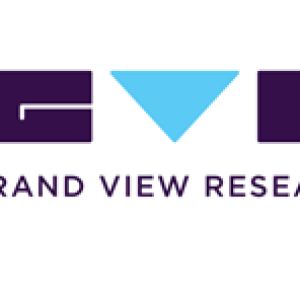Find Out More About Wildlife Health Market Global Growth With Rising CAGR And Forecast Till 2025Posted by Mrudula Anil Karmarkar on June 12th, 2023 The global wildlife health market size is expected to reach USD 4.67 billion by 2030, registering a CAGR of 9.89% over the forecast period, according to a new report by Grand View Research, Inc. The demand for zoonotic disease prevention, sustainable ecosystem management, and animal conservation are driving the market. The market landscape is being shaped by cutting-edge technology, greater investment, and the adoption of the ‘One Health’ strategy. The quadripartite Organizations - FAO (Food and Agriculture Organization, UN, WOAH (World Organization for Animal Health), WHO (World Health Organization), and UNEP (United Nations Environment Programme) - collaboratively developed ‘One Health Joint Plan of Action (2022-2026)’ to enhance the conservation of wildlife management and overall animal & human wellbeing. The effective management of wildlife health requires cooperation amongst stakeholders, including governmental organizations, academic institutions, conservation groups, and local populations. Innovative ideas and enhanced conservation outcomes can result from the creation of platforms for information sharing and cooperation. For instance, in September 2021, a cooperative agreement was signed by Virbac and Jectas Innovators for the development of animal health vaccines. The emergence of COVID-19 has emphasized the value of researching zoonotic illnesses or infections from wild animal reservoirs. To stop future outbreaks and safeguard the well-being of humans and wildlife, it is essential to look into the origins, transmission routes, and potential hosts of zoonotic illnesses. Although the vulnerability of many wildlife species to COVID-19 has not been thoroughly investigated, some preliminary study suggests that some animals, like minks, may be able to contract the virus. COVID-19 outbreaks in mink farms occurred in a number of nations, which necessitated the mass killing of afflicted animals to stop the virus's spread. Initiatives to promote veterinary care for wild animals in zoos, sanctuaries, and national parks, among others, have been implemented by various wildlife resources and organizations. For instance, the World Wildlife Fund (WWF) has been collaborating with partners from nearly 100 countries to sustain the healthcare of wildlife and people. The organization has over 5 million members registered globally, with over 1.3 million in the U.S. Similarly, the Association of Zoos and Aquariums (AZA) funds more than 2,500 wildlife conservation projects in over 100 countries worldwide. These measures are largely boosting the growth of the market. Some of the key factors driving the market include the increasing number of emerging & re-emerging zoonotic diseases from wild animal origins, growing government intervention in protecting wildlife Animal health by acknowledging its interconnectedness with human health, collaboration framework of multiple public sectors to promote wildlife conservation with funded programs, and growing establishments of national parks, zoos, and animal protection sanctuaries with standardized animal care. For instance, the Indian Ministry of Environment, Forest, and Climate has launched the “Vision-Plan 2021 - 2031” strategy that focuses on strengthening Central Zoo Authority and transforming Indian zoos with global standards to have advanced animal care. To Request Sample Copy of this report, click the link: https://www.grandviewresearch.com/industry-analysis/wildlife-health-market-report/request/rs1 The COVID-19 infection brought unprecedented changes in wildlife activities, with extensive lockdown measures and supply chain disruptions. According to an article published on May 2022 by the National Library of Medicine, the pandemic-imposed restrictions on movements have simultaneously reduced the patrolling and monitoring activities in several areas of wildlife facilities. The reduced forest-law enforcement, in turn, has increased the opportunities for illegal wildlife hunting by poachers. Furthermore, the pandemic has delayed funding services for wildlife management in several parts of the globe. For instance, according to the Euro Group for Animals Organization, the pandemic has delayed public funding to provide free emergency care for distressed & injured wild animals. Wildlife Health Market Report Highlights
Organizations, such as OIE (World Organization for Animal Health), have been striving for over a decade to support & improve wildlife health. Their key figures indicate that around 40% of amphibians, 25% of mammals, and 14% of birds are under threat of extinction. To mitigate this, several steps have been taken by governments of various countries along with key wildlife organizations, such as the World Wilde Fund (WWF), Wildlife Conservation Society (WCS), International Union for Conservation of Nature (IUCN), and National Resources Defense Council, Inc. among others, thereby protecting wild animals. In addition, OIE also states that 72% of the emerging infectious diseases around the world have a wildlife origin. Therefore, a well-advanced disease surveillance system and management measures with necessary medications may reduce the burden of life-threatening diseases similar to COVID-19. The major players, such as Boehringer Ingelheim International GmbH, NexGen Pharmaceuticals, Virbac, and Wedgewood Pharmacy, are constantly implementing strategic measures, such as launching new products and collaborating with government organizations, to mitigate the spread of zoonotic diseases from wild origins. For instance, in May 2022, Ceva Sante Animale acquired Artemis Technologies, Inc., a Canadian oral rabies vaccine manufacturer. This acquisition expanded the company’s veterinary vaccine offerings with ONRAB, a recombinant oral vaccine that showed positive trial results for wild skunks and raccoons in the U.S. Some of the prominent players in the global wildlife health market include:
Like it? Share it!More by this author |


